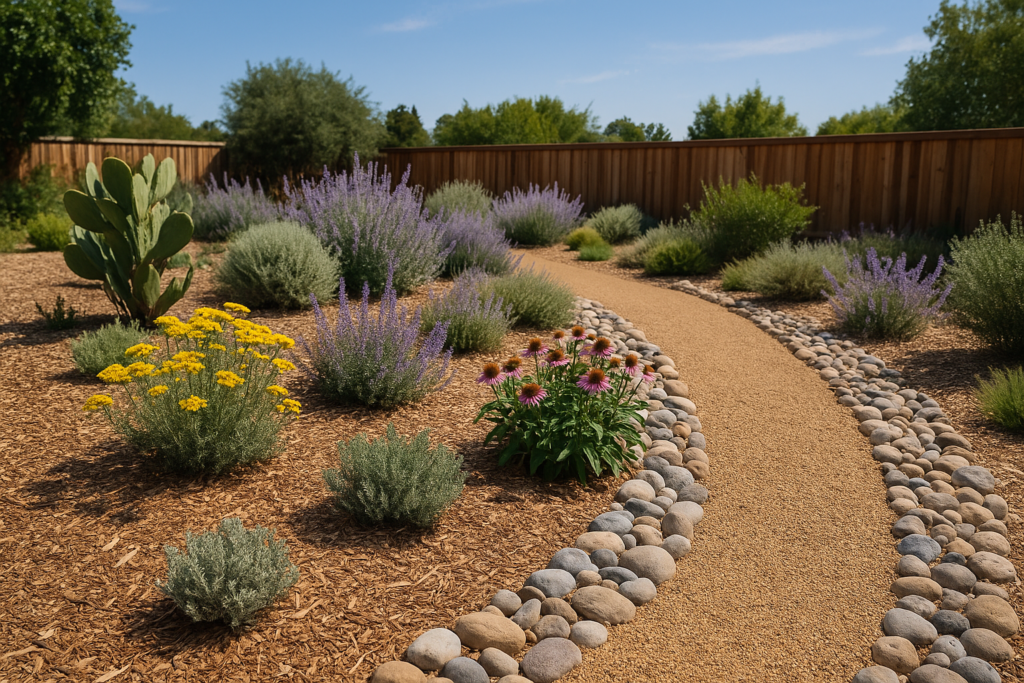As climate change reshapes our weather patterns, homeowners, businesses, and community spaces are rethinking traditional landscaping. Bright View Landscape has emerged as a leader in sustainable, low-water design—offering landscapes that conserve resources, thrive in drought conditions, and remain vibrant year-round. By combining native plant choices, efficient irrigation systems, and smart layout planning, Bright View Landscape creates outdoor spaces that are both eco-friendly and visually stunning.
In this article, we’ll explore how Bright View Landscape uses low-water plants to deliver beauty, resilience, and sustainability—while also covering best practices you can implement in your own garden.
Why Low-Water Landscaping Matters
Water scarcity is a growing concern worldwide. In many regions, drought restrictions limit irrigation, making traditional lawns and thirsty exotic plants impractical. Low-water landscapes not only save water but also reduce maintenance, improve biodiversity, and provide natural fire resistance.
Environmental Benefits
- Water Conservation – Using drought-tolerant species and efficient irrigation drastically reduces water use.
- Biodiversity Support – Native plants attract pollinators, birds, and beneficial insects.
- Fire-Wise Landscaping – Many drought-tolerant plants are also fire-resistant, creating safer landscapes.
Financial Benefits
Switching to a low-water garden can significantly cut your utility bill. Efficient watering methods like drip irrigation can save 50–70% more water compared to traditional sprinklers, with healthier plant growth and fewer disease issues.
For more ideas on eco-conscious landscaping, see Bright View Landscape | Sustainable Landscaping for a Greener Future.
Bright View Landscape’s Approach to Low-Water Planting
Bright View Landscape integrates three key strategies into every low-water design:
1. Native and Climate-Adapted Plants
Choosing plants suited to local conditions ensures long-term success with minimal input. Popular picks include:
- California Sagebrush – Silvery foliage, drought-hardy, supports pollinators.
- Echinacea & Coreopsis – Vibrant blooms with minimal water needs.
- Sedum ‘Autumn Joy’ – Succulent beauty with built-in drought and fire resistance.
2. Smart Irrigation Systems
Bright View Landscape designs irrigation systems that deliver water directly to plant roots. This often includes drip irrigation lines for deep watering with minimal waste. These systems:
- Prevent evaporation and runoff
- Encourage deep root growth
- Allow zone-specific watering schedules
3. Water-Zoning Landscape Design
By grouping plants with similar water needs together, Bright View Landscape ensures efficient watering and healthier growth. This also simplifies seasonal adjustments—reducing overwatering risks.
For more techniques, see Bright View Landscape Sustainable Design Techniques.
Building Your Own Low-Water Garden
Even if you’re not hiring professionals, you can still apply Bright View Landscape’s methods at home.
Step 1: Assess Your Space
Note sun exposure, soil type, and slope. These factors influence water retention and plant choice.
Step 2: Choose Drought-Tolerant Plants
Mix textures and heights for interest. Great options:
- Lavender – Fragrant, pollinator-friendly
- Ceanothus – Evergreen with vivid flowers
- Russian Wildrye – Deep-rooted grass that thrives in dry soils
Step 3: Improve Your Soil & Mulch
Adding compost improves water retention in sandy soil and drainage in clay. A 2–3 inch layer of mulch reduces evaporation and regulates soil temperature.
Step 4: Install Drip Irrigation
Target the root zones for maximum efficiency. Regularly check emitters for clogs and adjust watering frequency with seasonal changes.
Integrating Hardscapes for Function and Style
Low-water landscapes often incorporate rock gardens, gravel pathways, and stone borders to reduce plant density while adding visual appeal. Bright View Landscape uses these elements not just decoratively, but also for:
- Fire safety – Creating defensible space near structures
- Erosion control – Stabilizing slopes and reducing runoff
- Accessibility – Low-maintenance walkways and seating areas
Hardscaping also parallels craftsmanship in other industries—just as a stone fabricator shapes granite with precision, landscape designers sculpt outdoor environments to be both functional and enduring.
Maintenance Tips for a Thriving Low-Water Landscape
- Spring – Deep water before heat arrives; refresh mulch
- Summer – Water early morning; adjust drip systems as needed
- Fall – Reduce watering with cooler temperatures; plant perennials
- Winter – Drain irrigation before frost; prune and remove debris
Pairing these with native plants ensures long-term resilience and reduced upkeep.
Beyond Landscaping: Sustainability Across Industries
The precision and planning in Bright View Landscape’s designs mirror practices in other fields, from Countertop Fabricators crafting stone surfaces to architects selecting energy-efficient materials like those in the Insulating Glass Unit Guide for Architects and Builders. In each case, the goal is to combine beauty, durability, and sustainability.
Final Thoughts
Bright View Landscape proves that low-water gardening is not about compromise—it’s about innovation. By combining drought-tolerant plants, efficient irrigation, and smart design, they create spaces that are eco-conscious, cost-effective, and visually inspiring.
For more insights into wildlife-friendly design, check out Bright View Landscape | Sustainable Gardens Supporting Local Wildlife or explore their Bright View Landscape Using Low-Water Plants.
By following these principles, you can transform your own yard into a resilient, beautiful, and water-wise oasis—one that stands up to drought while supporting a greener future.

